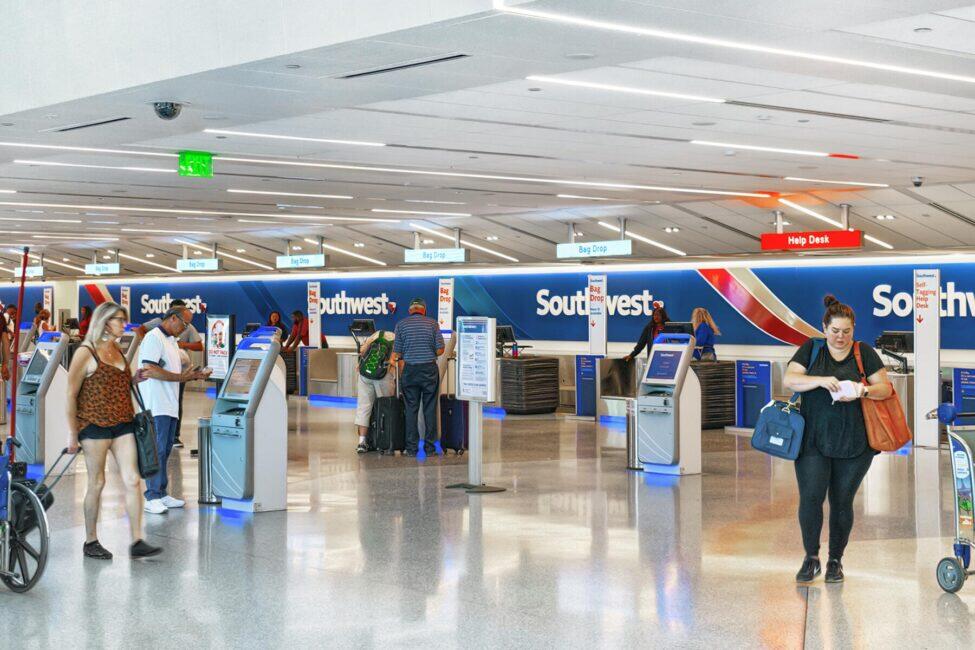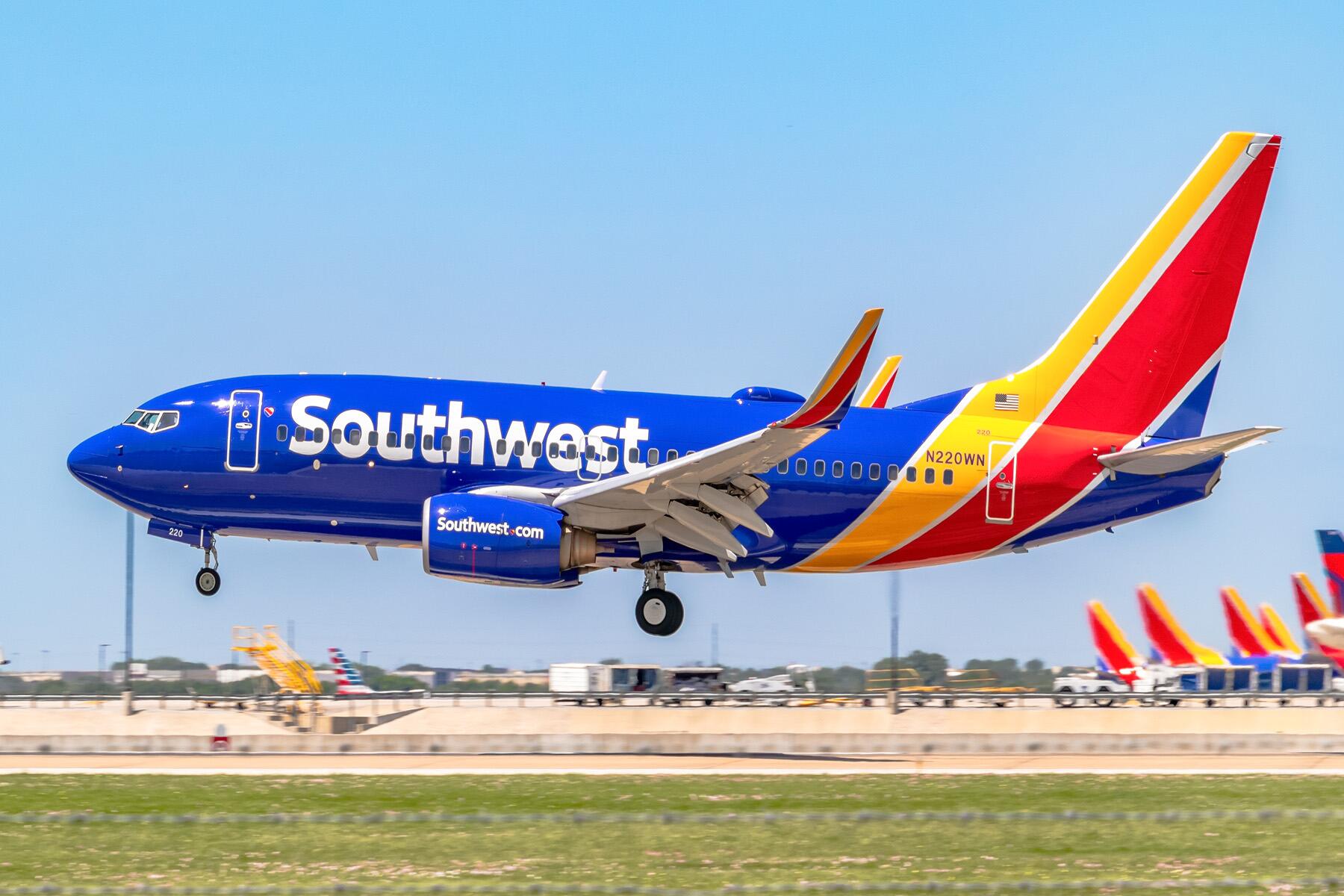If I were to write a letter to Southwest, it would start something like this.
Oh, Southwest Airlines. We’ve been through it together.
We’ve had some highs and some lows. I’ll never forget the year my husband and I both scored Companion Passes that allowed our two kids to fly free or the day we flew on my son’s birthday when the flight attendant allowed him to pass out pretzels during in-flight service.
I’ll also never forget when my family of four was stranded in Florida for three days because of the overbooking you blamed on the FAA or the two colossal disruptions you’ve had because of “outdated software.” I’ve cried, “Never again, Southwest!” more than once, but I’ve always come back. Sure, some of the shine rubbed off of our relationship, but I’ve always been able to see the good in you and speak of you in (mostly) positive–albeit honest–terms.
Although it might sound like I’m addressing a partner with whom I’ve had a dysfunctional relationship. Like many relationships, I’ve learned to appreciate the positives, accept them on their terms, and gloss over—but not forget—the less-than-blissful moments.
After hearing the announcement over the summer that you, Southwest Airlines, intend to end its open seating policy, I need to say this: I know I’ve said bad things about you, but don’t change! I’ve had time to think, and I like open seating!
And, Southwest, you’ve announced even more ch-ch-changes with premium, extra-legroom seating, a huge departure—pun intended—from the current model of no business or first-class cabins. Maybe I’m in the minority, but I’m not excited about the changes.
Continue Reading Article After Our Video
Recommended Fodor’s Video

For Those Who Don’t Know: This Is How Open Seating Works
Southwest Airlines’ open seating policy has long drawn criticism from passengers. Instead of seat assignments, passengers are put into one of three boarding groups: A, B, and C. Within each boarding group, each passenger is assigned a number. A1 is first, C60 is last.
Passengers line up at the gate according to number, which can feel chaotic, especially if you’re unfamiliar with the Southwest Airlines way. The experience has been described as “cattle car seating,” although the airline has done its best to make things as orderly and easy to follow as possible.
Although I’m a fan of open seating, I’ll admit there’s a bit of Hunger Games energy to the boarding process. The people in the early A boarding group are the career tributes from Districts One and Two who get the good stuff from the cornucopia. Group C gets what’s left. If you see C55 on your boarding pass, say hello to being squished between two strangers in the back row near the lavatory.
Many travelers complained about the challenge of sitting together while flying as a group, especially passengers in later boarding groups who might struggle to find seats together. There’s also the issue of saving seats, which is when things can get spicy. Seat saving is a controversial topic. Say a group of four people traveling together has one A group and three C groups; the A group passenger saves spots for their companions by putting personal items on seats or simply telling people someone is sitting there. Sometimes, people move on and find other seats. Sometimes, there are arguments because, conveniently, Southwest doesn’t have a written policy on seat saving.
Southwest has a discussion forum, and seat saving is consistently among the most inflammatory subjects. It’s a little like a Reddit thread gone wrong, which may have something to do with why the airline finally decided to go with regular assigned seats like everybody else. No assigned seating = no seat saving = less friction over where to sit. Currently, flight attendants settle any seat-saving arguments. Different passengers report different answers from airline personnel over the years, which compounds the frustration.

In Defense of Open Seating
Despite the criticism, I like open seating. It makes sense. If it feels disorganized to some, they haven’t taken the time to understand Southwest’s policy, which is easy to understand if you read it.
Every time I fly Southwest, I see a passenger looking for their seat number on their boarding pass. Every. Single. Time. Even if you’ve not read the open seating policy online, the gate agents and the flight attendants lay it all out during boarding. If you book a Southwest flight without understanding the open seating policy, you get blasted with it at the airport and on the plane.
Flights are relatively low-cost. I always compare prices when booking a domestic flight; Southwest’s fares are usually the lowest. If I don’t want to be the caboose of the C Group, there are options like EarlyBird Check-In, which usually helps move my boarding position up until at least the middle B Group and often the late A Group. I also know I can check in online at precisely the 24-hour mark, and while this method doesn’t yield the awesome boarding position it once did, it pretty much guarantees I won’t be in that middle seat in the last row unless that’s what I want.
There’s no mystery about getting an early boarding position, and several options are currently available for getting into that magical A group. Aside from checking in at the 24-hour mark or buying EarlyBird Check-In, passengers can pay for an upgraded boarding position or buy a Business Select fare, both of which get you to the front of the line. While I don’t love paying for the seat I want, I stack these options against Southwest’s low fares and free checked bag policy, and it usually feels like I am coming out okay in terms of value.
The bottom line is I like Southwest’s open seating policy because I understand it. I know how to get on the plane first or at least not be last. But not everyone shares my views.
What Others Have To Say About Open Seating
Kartik Ahuja, founder, CEO, and CFO of GrowthScribe, says he’s happy about the change. Ahuja, who travels weekly for business and reports about half of his trips involve a Southwest Airlines flight, usually travels with a colleague and that open seating often prevents them from sitting together.
“People block seats for their friends and family who are not on the flight yet, and you can’t really say no, especially if they’re flying with kids,” says Ahuja, who also reports he’s seen people become aggressive over seats and even calling seat-savers “a menace.”
Mike Schmidt, a lawyer who travels for business an estimated 15-20 times a year, and flies Southwest about 30% of the time, says he’s ultimately not thrilled about the change. But he understands that airlines need to change to meet customer demand and improve efficiency. “The boarding process with open seating often led to a lot of confusion and congestion, especially during peak travel times,” says Schmidt, who admits assigned seats may result in a more orderly boarding experience.
Family travel expert Sarah Gilliland says she doesn’t mind the open seating policy but believes the changes will increase costs for passengers, which she predicts Southwest will “happily pass on to its consumers.” She also states that she’s looking forward to not fighting for seats and would rather just know her seat number and be done with it.
Frequent business travelers know what they want and see Southwest’s changes as a better way to get that. Travel writer Susan Lanier-Graham says being able to select her seat is essential. “I want an aisle seat that has enough under-seat storage because not all seats are created equal, and I hate being in an over-the-wing seat row with no window, yes, even when I’m in an aisle seat.”
I’m the Problem, It’s Me
Maybe I just hate change, but I’m sure I’ll roll with whatever changes Southwest makes. They haven’t announced when these changes take effect–though they’re expected sometime in 2025. And we don’t know what additional costs will be associated with preferred seating. I’ll grumble and probably still fly Southwest when I can snag a cheap fare. Sigh.
Maybe I’ll reminisce about “Back in the day” with any holdover open-seating fans out there. Maybe in a few years, I’ll forget all about the before times when we lined up to make that mad dash for the exit row seat.
But Southwest has always made budget-friendly a part of its brand. In addition to low fares, many travelers see the free checked bag policy as a money-saving incentive when other carriers charge as much as $40 per bag. Is that perk next on the chopping block? Let’s hope not. It’s the end of an era, for better or for worse. Just don’t come for my free checked bags, Southwest. Then I’ll break up with you for real.

